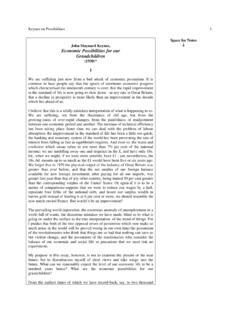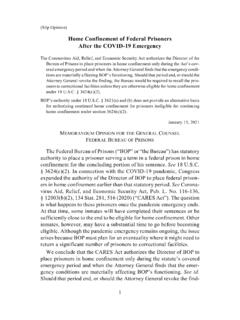Transcription of A Roadmap to Pushdown Accounting - Deloitte
1 A Roadmap to Pushdown Accounting June 2016. The FASB Accounting Standards Codification material is copyrighted by the Financial Accounting Foundation, 401 Merritt 7, PO Box 5116, Norwalk, CT. 06856-5116, and is reproduced with permission. This publication contains general information only and Deloitte is not, by means of this publication, rendering Accounting , business, financial, investment, legal, tax, or other professional advice or services. This publication is not a substitute for such professional advice or services, nor should it be used as a basis for any decision or action that may affect your business. Before making any decision or taking any action that may affect your business, you should consult a qualified professional advisor. Deloitte shall not be responsible for any loss sustained by any person who relies on this publication. As used in this document, Deloitte means Deloitte & Touche LLP, Deloitte Consulting LLP, Deloitte Tax LLP, and Deloitte Financial Advisory Services LLP, which are subsidiaries of Deloitte LLP.
2 Please see for a detailed description of the legal structure of Deloitte LLP and its subsidiaries. Certain services may not be available to attest clients under the rules and regulations of public Accounting . Copyright 2016 Deloitte Development LLC. All rights reserved. Contents Preface iv Pushdown Accounting 1. Overview of Pushdown Accounting 1. Scope 1. Option to Apply Pushdown Accounting Upon a Change in Control 2. Common-Control Transactions May Trigger Pushdown Accounting 4. Subsequent Election to Apply Pushdown Accounting 4. Election to Apply Pushdown Accounting Is Irrevocable 5. Subsidiary's Election to Apply Pushdown Accounting 5. Specific Initial Recognition and Measurement Guidance in an Acquiree's Separate Financial Statements 7. Subsequent Measurement Guidance 7. Goodwill and Bargain Purchase Gains 8. Acquisition-Related Liabilities 9. Acquisition-Related Debt 9. Contingent Consideration 10. Acquisition-Related Costs 10. Income Taxes 11. Foreign Currency Translation 11.
3 Disclosures 12. Transition and Effective Date 12. Financial Statement Presentation 13. Recognizing Expenses on the Black Line 13. Identifying When a Newly Formed Entity to Effect an Acquisition Is the Acquirer 14. Newco and Acquisition-Related Costs 17. Recapitalization Transactions 17. Transaction Costs in a Recapitalization 18. Appendix A Selected Glossary Terms From ASC 805-50 19. Appendix B Glossary of Standards and Other Literature 21. Appendix C Abbreviations 23. iii Preface June 2016. To our friends and clients: We are pleased to present A Roadmap to Pushdown Accounting . This Roadmap provides Deloitte 's insights into and interpretations of the guidance on the application of Pushdown Accounting . The body of this Roadmap combines the principles from the Pushdown Accounting subsections of ASC. 805-50 with Deloitte 's interpretations and examples in a comprehensive, reader-friendly format. Further, the table of contents is a helpful navigational tool, providing links to topics and interpretations.
4 We intend to incorporate this Roadmap along with others covering additional business combinations issues addressed in subsections of ASC 805-50 into a comprehensive business combinations Roadmap in the future. We hope that you find this publication a valuable resource when considering the guidance on Pushdown Accounting . Sincerely, Deloitte & Touche LLP. iv Pushdown Accounting Overview of Pushdown Accounting When an entity obtains control of a business, a new basis of Accounting is established in the acquirer's financial statements for the assets acquired and liabilities assumed. ASC 805-10,1 ASC 805-20, and ASC. 805-30 provide guidance on Accounting for an acquisition of a business in the acquirer's consolidated financial statements. Sometimes the acquiree will prepare separate financial statements after its acquisition. Use of the acquirer's basis of Accounting in the preparation of an acquiree's separate financial statements is called Pushdown Accounting .. In November 2014, the FASB issued ASU 2014-17, which became effective upon issuance.
5 This ASU. gives an acquiree the option to apply Pushdown Accounting in its separate financial statements when it has undergone a change in control. Before the issuance of ASU 2014-17, entities applied the Pushdown Accounting guidance in SAB Topic , EITF Topic D-97, and comments made by the SEC observer at EITF meetings. In addition, practice developed on the basis of SEC staff speeches; the AICPA's October 30, 1979, issues paper on Pushdown Accounting ; and the FASB's December 18, 1991, discussion memorandum on this topic. However, such guidance was complicated and incomplete, only applied to SEC registrants, and was based on bright lines that provided opportunities for structuring and misapplication. To address these concerns, the FASB undertook a project to reconsider the application of Pushdown Accounting . In response to the issuance of ASU 2014-17, the SEC staff issued SAB 115 to rescind the guidance in SAB Topic and the FASB issued ASU 2015-08 to rescind the remaining guidance on Pushdown Accounting and collaborative groups in ASC 805-50-S99.
6 ASU 2014-17, which was codified into the Pushdown Accounting subsections of ASC 805-50, now provides both public and nonpublic entities with authoritative guidance on applying Pushdown Accounting . Scope ASC 805-50. 05-9 The guidance in the Pushdown Accounting Subsections addresses whether and at what threshold an acquiree that is a business or nonprofit activity can apply Pushdown Accounting in its separate financial statements. 15-10 The guidance in the Pushdown Accounting Subsections applies to the separate financial statements of an acquiree and its subsidiaries. 1. For a list of the titles of standards and other literature referred to in this publication, see Appendix B. For a list of abbreviations used in this publication, see Appendix C. 1. Pushdown Accounting The Pushdown Accounting subsections in ASC 805-50 address when an acquiree may elect to apply Pushdown Accounting . ASU 2014-17 indicates that the scope of Pushdown Accounting includes the separate financial statements of an [acquiree] and its subsidiaries that meet the definition of a business in ASC 805-10 or a nonprofit activity upon the occurrence of an event in which an acquirer (an individual or an entity) obtains control of the [acquiree].
7 The scope includes both public and nonpublic entities. The EITF considered whether the scope of the Pushdown Accounting subsections in ASC 805-50 should be limited to transactions in which an entity becomes substantially wholly owned rather than applying to all transactions or events in which an acquirer obtains control of a business or nonprofit activity. The Task Force ultimately decided that the scope of the guidance should be broader and should be consistent with the scope of ASC 805-10, ASC 805-20, and ASC 805-30, which apply to all transactions or events in which an acquirer obtains control of a business or nonprofit activity. As indicated in the Background Information and Basis for Conclusions of ASU 2014-17, the Task Force reasoned that the FASB had already decided in ASC 805-10, ASC 805-20, and ASC 805-30 that obtaining control of a business is a significant event for which a new basis of Accounting is required for the net assets acquired and, in the absence of another distinct threshold that is conceptually grounded in GAAP, change-in-control events also could serve as the basis for establishing a new basis in an [acquiree's].
8 Separate financial statements. The Task Force also decided that a change-in-control threshold for Pushdown Accounting could reduce the complexity of the Pushdown Accounting guidance by eliminating the need to reconsider or develop collaborative group guidance, under which a group of investors may be regarded as a single investor in some circumstances. An acquiree may only elect Pushdown Accounting if another entity or individual ( , an acquirer) has obtained control of the acquiree. Certain transactions are not within the scope of the Pushdown Accounting subsections of ASC 805-50 because they are not transactions in which an acquirer obtains control of a business or nonprofit activity ( , they are not within the scope of ASC 805-10, ASC 805-20, and ASC 805-30). Such transactions include the formation of a joint venture; acquisitions of assets or groups of assets that do not constitute a business; combinations between entities, businesses, or nonprofit activities under common control; and mergers of not-for-profit entities.
9 For example, the Pushdown Accounting election does not apply to the formation of a joint venture because, while an entity loses control of a subsidiary in such a transaction, no other individual or entity obtains control of it. Option to Apply Pushdown Accounting Upon a Change in Control ASC 805-50. 25-4 An acquiree shall have the option to apply Pushdown Accounting in its separate financial statements when an acquirer an entity or individual obtains control of the acquiree. An acquirer might obtain control of an acquiree in a variety of ways, including any of the following: a. By transferring cash or other assets b. By incurring liabilities c. By issuing equity interests d. By providing more than one type of consideration e. Without transferring consideration, including by contract alone as discussed in paragraph 805-10-25-11. 2. Pushdown Accounting ASC 805-50 (continued). 25-5 The guidance in the General Subsections of Subtopic 810-10 on consolidation, related to determining the existence of a controlling financial interest shall be used to identify the acquirer.
10 If a business combination has occurred but applying that guidance does not clearly indicate which of the combining entities is the acquirer, the factors in paragraphs 805-10-55-11 through 55-15 shall be considered in identifying the acquirer. However, if the acquiree is a variable interest entity (VIE), the primary beneficiary of the acquiree always is the acquirer. The determination of which party, if any, is the primary beneficiary of a VIE shall be made in accordance with the guidance in the Variable Interest Entities Subsections of Subtopic 810-10, not by applying the guidance in the General Subsections of that Subtopic relating to a controlling financial interest or the guidance in paragraphs 805-10-55-11 through 55-15. 25-6 The option to apply Pushdown Accounting may be elected each time there is a change-in-control event in which an acquirer obtains control of the acquiree. An acquiree shall make an election to apply Pushdown Accounting before the financial statements are issued (for a Securities and Exchange Commission (SEC).)
















